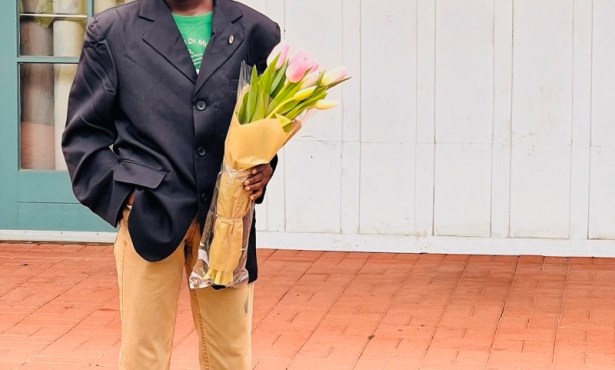UCSB Arts & Lectures Turns 50
Santa Barbara's Premiere Performance and Lecture Series Keeps Getting Better
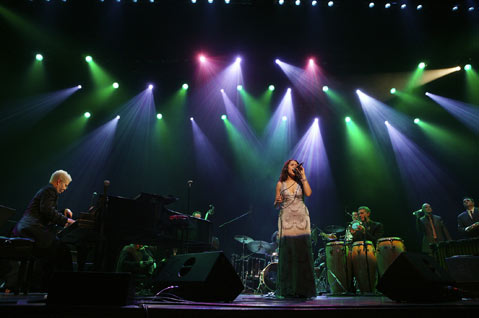
Whether it’s a sold-out lecture by Anthony Bourdain at the Arlington, a thrilling classical concert featuring Yo-Yo Ma, a happening dance party with former Talking Head David Byrne, or a spellbinding evening of contemporary performance art by Laurie Anderson, every year, UCSB’s Arts & Lectures (A&L) series provides Santa Barbara with some of the world’s most exciting and inspirational performances. Each season from A&L includes an almost unbelievable range of artists and events, all united under the program’s banner of extreme quality. As A&L director Celesta Billeci put it, “The program’s strength is diversity, but raising the bar every year on the quality of what we present is what keeps it all together.” This relentless pursuit of best-in-category experiences is what has earned A&L a loyal following of intellectually adventurous audiences who are willing to take their recommendations on trust and thus encounter performers-some world-famous, others just becoming well-known-who are capable of changing lives.
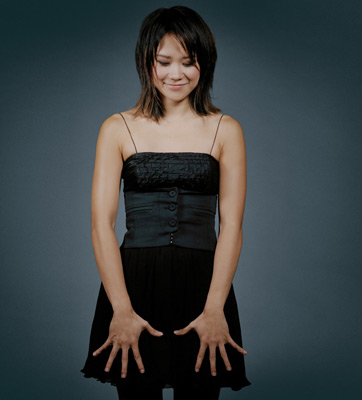
The 50th anniversary season of UCSB’s powerhouse presenting program is upon us. It promises to be a year of truly outstanding and innovative offerings, and it’s also a great opportunity to look back and celebrate A&L’s roots, which are entwined with the idea of the university that informed the great building stage of the UC system under Clark Kerr in the late 1950s and 1960s. In fact, California’s still-splendid yet oft-beleaguered public universities retain few features more representative of Kerr’s sweeping vision for what he called the “multiversity” than this program, which, paradoxically, now subsists almost entirely on the basis of private giving by members of the Santa Barbara community.
In the Godkin Lectures that Kerr gave at Harvard in 1963 in the wake of California’s adoption of an ambitious Master Plan for Higher Education, and just four years after the founding of UCSB Arts & Lectures, he proposed a historical scheme for understanding the shape of culture in the California he foresaw in the coming century. John Henry Newman, upon whom Kerr modeled his talks, wrote his The Idea of a University in support of establishing a Catholic university in Dublin in 1852. To Kerr, Newman’s concept was suggestive, but in the end amounted to nothing more than “a village with its priests.” The vaunted universities of Germany, where the doctorate degree and the research university both originated, were, according to Kerr, like “a one-industry town-with its intellectual oligarchy.” But the “multiversity” that Kerr proposed for the State of California would be different, and would take a step beyond any idea of the university that had come before it. It would be “a city of infinite variety,” wrote Kerr, where “there are many separate endeavors under one rule of law.” The university would bring into existence a City of Intellect, a new form of society that would use federally subsidized research for the benefit of every citizen.
Kerr’s dream was not long in colliding with the realities of the Vietnam War, the Free Speech Movement, and the eventual waning of the military-industrial complex that underwrote so much of the development of his beloved UC campuses. But in its wake, the dream of a “city of infinite variety” lives on through the imaginative reflection that the programs like UCSB Arts & Lectures now fashion out of ongoing relationships with the world’s greatest performers, choreographers, composers, writers, and thinkers. At a moment when the UC system may seem lacking in vision, this vibrant adjunct of a program is acting more like a senior faculty member by surviving difficult budget cuts, continuing to do cutting-edge research, and raising significant funds from outside the university to offset its expenses.
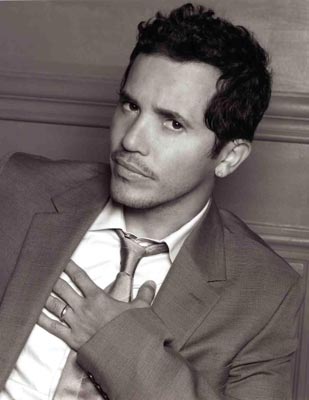
In order to better understand the journey and the mission of this prominent and influential organization, I spoke with Billeci about plans for A&L’s 50th anniversary year, and the challenges the organization faces in the current economy. It’s clearly not an easy time for high-ranking UCSB administrators. Billeci was candid about the negative effects the entire county can expect as UCSB experiences the first wave of impact of the proposed furlough program that begins this fall, and she cited in particular the difficulties faced by couples who are both employed by the university, of which there are many. But as far as the program is concerned, she was uniformly upbeat. While acknowledging that certain areas have been hit-for the first time in several years, A&L will not be commissioning any new work this year-she asserted that the show would indeed go on, and go on in the now-familiar grand style to which we have become accustomed.
However, in response to the new economy, and in a pattern that’s showing up in many of the city’s arts presenting organizations, collaboration is an important component in A&L’s strategy right now. In January, the program will partner with three other presenters-Stanford Lively Arts, the Robert and Margrit Mondavi Center for the Performing Arts at UC Davis, and San Francisco Performances-to produce a West Coast tour for Morphoses/The Wheeldon Company, a new contemporary ballet company that brings together choreographer Christopher Wheeldon and Executive Director Lourdes Lopez from the George Balanchine Foundation. Wheeldon is the foremost contemporary choreographer working in the classical ballet idiom, and his company’s performances, which are often accompanied by live music, are among the hottest tickets in London, Paris, and New York.
In another multiorganization collaboration, A&L will bring dance theater group DV8 to the Lobero. It’s a major commitment, with UCLA Live and the Yerba Buena Center for the Arts chipping in to help bear the costs of freight, airfare, and production. The result for Santa Barbara is an unprecedented three-night run at the Lobero on the 18, 19, and 20 of November for what Billeci promises will be a “life-changing experience.”

Billeci acknowledges that in addition to the highest possible quality, she looks for things “no one else is going to bring here.” For instance, the opening event of this season on Thursday, September 24, at the Arlington is a live presentation of the popular National Public Radio program Wait Wait : Don’t Tell Me! This kicks off a solid week of events that exemplify the range and style of the program, including an Arlington concert by Wynton Marsalis and the Jazz at Lincoln Center Orchestra; a lecture by Khaled Hosseini, author of the best-selling novel The Kite Runner; a concert by the fabulous and category-defying small orchestra Pink Martini; and a night with country music legend Merle Haggard. And that’s just the first week of the season.
When asked what has changed most in the world of presenting since she began as A&L director in 2000, Billeci said the economics of the situation have undergone a radical shift toward the private sector. “There has been no touring or presenting money available from the California Arts Council for more than five years now, and the grants that come from the National Endowment for the Arts are not what they used to be,” she said, going on to explain how this has affected her job and the jobs of all such program directors. “You used to be able to spend all your time on research and planning, touring the world looking for interesting new performers, and thinking about your season. Now you have to get private donations and you have to do private fundraising all the time. Most people are not aware of this, but the university only covers about 5 percent of our annual budget. Three-quarters of my time now goes to fundraising, and anyone who runs one of these programs now has got to be an outstanding fundraiser.”
She continued, “I still have a few colleagues who have retained the title of ‘artistic director,’ but they are all also executive directors, because you have to be both. You have to have the business acumen to keep the budget balanced, and you have to have the curatorial expertise to program a season that’s competitive, because you can’t raise money around a mediocre calendar.”
With a program as large and as consistently provocative as A&L, one would expect the university might occasionally interfere with content, but Billeci insisted nothing of the sort has happened in her nine years as director, saying, “I have never experienced anything I would call censorship. I have had to impose something on myself that I would refer to as ‘discipline,’ in the sense that I can’t do everything every year. Sometimes I feel like a kid in a candy store, and I just have to slap my own hand and say, ‘No, you can’t have that!’ when I am reaching for too much, and on the verge of spending money we don’t have. But still, there are those things that I will stretch for because they are too important to lose, like DV8. We are subsidizing that because I feel it is cutting-edge, and that it will provoke a conversation about tolerance that will benefit everyone who sees it. Backing the riskier things, discovering things early and supporting them from the ground up-these are the moves that make a truly stellar presenter. I always remind myself that we’re nothing without some risk.”
One of the most important elements in the A&L program is youth outreach. Whether it’s through presenting a class at UCSB or going into the public school system to meet and work with k-12 students, every A&L performer is required to offer an educational component. “We have a responsibility to UCSB students because faculty members often use our events as supplements to their course materials,” Billeci said. “We’re like a living textbook in that way, and the response from students and faculty consistently is powerful.” Students at UCSB have been so supportive of the program that six years ago, when budget cuts threatened to make student tickets more expensive, the student body voted to levy a $4 per quarter tax on all students to keep the ticket prices in line with what they could afford.
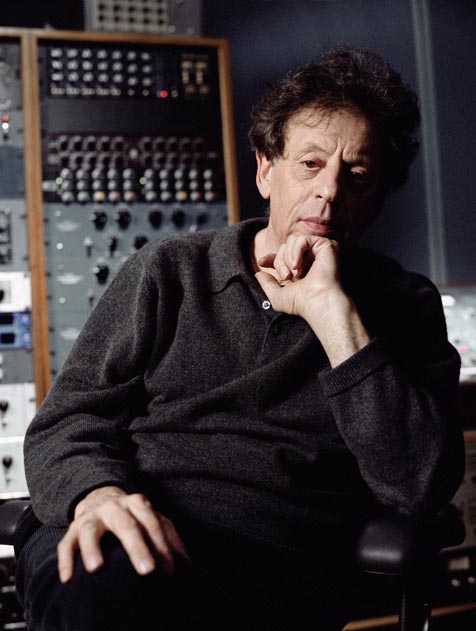
When asked about favorite memories of her tenure as director, Billeci became expansive, going back to the very first event she programmed in fall 2001: a concert by Wynton Marsalis, who will be returning in just a few weeks. Other favorites included performances by Laurie Anderson and Philip Glass, both of whom Billeci considers personal friends as well as important, groundbreaking artists who consistently push their fields and advance their art forms. About A&L staple Yo-Yo Ma, Billeci was effusive, saying, “When people are at the top of their game, and they’re also really nice, like Yo-Yo Ma, it’s impossible not to fall in love.”
As difficult as it may be to choose one group to represent something as varied and nuanced as the programming of A&L, returning favorites Pink Martini may come the closest. About them Billeci said, “Thomas [Lauderdale] and China [Forbes] are so brilliant, and what they do is so entertaining. I find them irresistible.” Unable to stop the flow of great memories, she name-checked two Davids: David Sedaris (“I love to laugh in the theater, and David always makes me laugh”) and David Byrne, whose concert at the Arlington last year elicited an ecstatic, dancing response from the packed Arlington. In the months to come, expect another round of great memories to be created by UCSB Arts & Lectures, Santa Barbara’s most eclectic and dynamic arts presenting organization.
4•1•1
Arts & Lectures’ 50th season kicks off on Thursday, September 24, at 8 p.m. with Wait Wait : Don’t Tell Me! at the Arlington Theatre. For tickets or to learn more about A&L’s season, call 893-3535 or visit artsandlectures.ucsb.edu.


